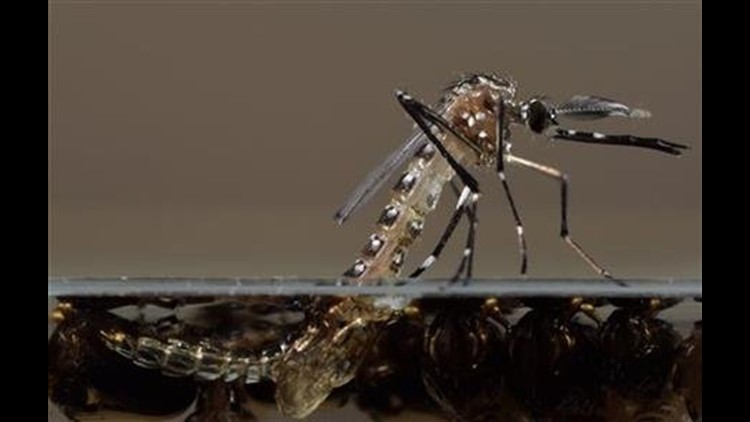NEW HAVEN – Officials said mosquitoes trapped in the Pachaug State Forest in Voluntown on July 31 have tested positive for Eastern Equine Encephalitis virus (EEE).
In a statement, the Connecticut Mosquito Management Program said, “These results represent the first EEE positive mosquitoes identified in the state by the Connecticut Agricultural Experiment Station (CAES) this year. The mosquitoes were Culiseta melanura, a predominately bird-biting species. Connecticut residents are reminded to protect themselves from mosquito bites and mosquito-borne diseases.”
“The detection of EEE virus in July is reason for concern as conditions are suitable for further build-up of the virus in the coming weeks and months” said Dr. Theodore Andreadis, Director of the CAES. “We will continue to closely monitor mosquitoes for virus amplification and we encourage everyone to take simple measures such as wearing mosquito repellent and covering bare skin, especially during dusk and dawn when mosquitoes are most active.”
The statement went on to say:
“Eastern equine encephalitis is a rare but serious disease in people. On average there are 6 cases each year in the United States. In Connecticut, outbreaks of EEE have occurred sporadically among horses and domestic pheasants since 1938. The last major outbreak of EEE in the state occurred in 2013 and resulted in one human fatality. In humans, symptoms of EEE appear 4-10 days after being bitten by an infected mosquito. EEE infection can result in one of two types of illness, systemic or encephalitic (involving swelling of the brain). The type of illness will depend on the age of the person and other host factors. It is possible that some people who become infected with EEE may be asymptomatic. Systemic infection has an abrupt onset and is characterized by chills, fever, malaise, arthralgia, and myalgia. Signs and symptoms in encephalitic patients are fever, headache, irritability, restlessness, drowsiness, anorexia, vomiting, diarrhea, cyanosis, convulsions, and coma.
Approximately a third of all people with EEE die from the disease. Death usually occurs 2 to 10 days after onset of symptoms but can occur much later. Of those who recover, many are left with disabling and progressive mental and physical sequelae, which can range from minimal brain dysfunction to severe intellectual impairment, personality disorders, seizures, paralysis, and cranial nerve dysfunction. Many patients with severe sequelae die within a few years. No human vaccine against EEE infection or specific antiviral treatment for clinical EEE infections is available.”
To reduce the risk of being bitten by mosquitoes residents should:
- Minimize time spent outdoors between dusk and dawn when mosquitoes are most active.
- Be sure door and window screens are tight-fitting and in good repair.
- Wear shoes, socks, long pants, and a long-sleeved shirt when outdoors for long periods of time, or when mosquitoes are more active. Clothing should be light colored and made of tightly woven materials that keep mosquitoes away from the skin.
- Use mosquito netting when sleeping outdoors or in an unscreened structure and to protect small babies when outdoors.
- Consider the use of mosquito repellent, according to directions, when it is necessary to be outdoors.



